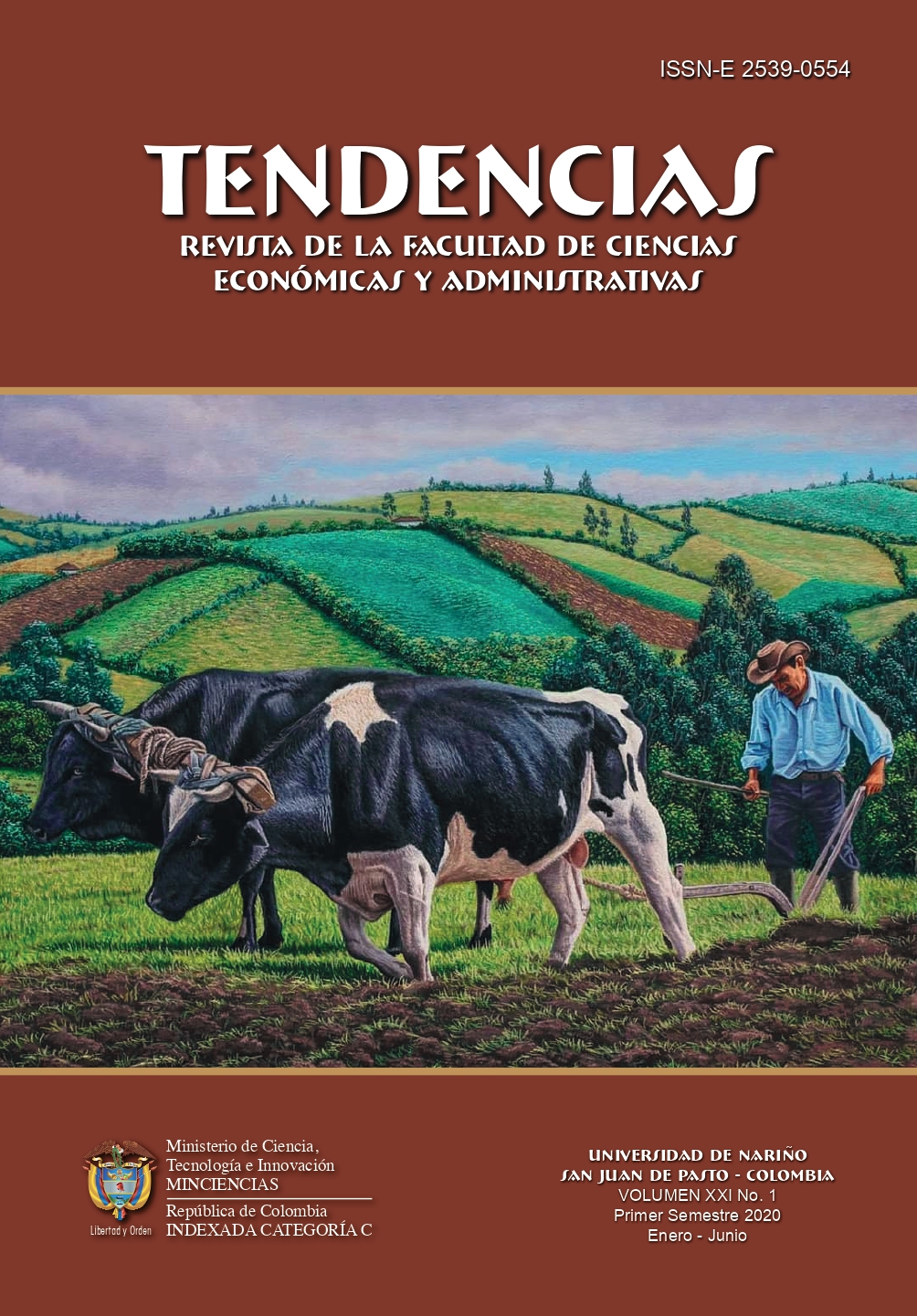Economic welfare: an analytical and critical approach
DOI:
https://doi.org/10.22267/rtend.202101.132Keywords:
welfare, utility, economic theoryAbstract
The central purpose of this article is to make an analytical consideration of the theses associated with the theory of welfare developed by authors such as Bentham (1786), Edgewoth (1881), Arrow (1974), Sen (2000), Max-Neef (2011) and Deaton (2015). Through a documentary review based on original scientific works and articles, the concept of welfare and importance in economic theory was examined. The document addresses, on the one hand, the orthodox
approach based on utilitarianism, specifying the individual choice of goods and services as an instrument that enables the satisfaction of needs and, therefore, the maximization of their welfare situation; On the other hand, the paper analyzes the theory of functions and capacities or, also called fundamental liberties, which exalts the heterogeneity of the human being and his living conditions objectively. The main conclusion of this document is that the concept of welfare is based on two clearly differentiated positions, a first that suggests that the concept can be modeled in a utility function, and a second approach that promotes that it is a complex term, it is made up of multidimensional expressions of development.
Downloads
References
(1) Arrow, K. (1951). Social Choice and Individual Values. John Wiley y Sons, Inc.
(2) Arrow, K., & Scitovsky, T. (1974). La Economía Del Bienestar. Fondo de Cultura Económica.
(3) Bentham, J. (1786). Filosofía de la ciencia económica. Fondo de Cultura Económica.
(4) Deaton, A. (2015). El gran escape. Salud, riqueza y los orígenes de la desigualdad. Fondo de Cultura Económica.
(5) Edgewoth, F. (1881). Mathematical Psychics: An essay on the aplication of mathematics to the moral science. Stanford University Libraries.
(6) Gallego, L. (2015). Bienestar y género bajo el enfoque de las capacidades. Aplicación al caso de Medellín [Universidad Autónoma de Barcelona]. https://www.tdx.cat/bitstream/handle/10803/298332/lmgd1de1.pdf?sequence=1yisAllowed=y
(7) González, J. (1998). Arrow: la elección, los valores y la ideología de mercado. Cuadernos de Economía, 17(28), 27-41. https://revistas.unal.edu.co/index.php/ceconomia/article/viewFile/11609/20646
(8) Kaldor, N. (1939). Welfare Propositions in Economic. The Economic Journal, 49(195), 549–552. https://doi.org/https://doi.org/10.2307/2224835
(9) Keynes, J. (1926). The end of the Laissez-faire. The economic consequences of the peace. Great Minds Series.
(10) Kitchenham, B. (2004). Procedures for Performing Systematic Reviews. Keele University. http://www.inf.ufsc.br/~aldo.vw/kitchenham.pdf
(11) Max-Neef, M. (1986). La economía descalza: Señales desde el mundo invisible. Nordam Comunidad.
(12) Max-Neef, M., Elizalde, A., & Hopenhayn, M. (1986). Desarrollo a Escala Humana. Conceptos, aplicaciones y algunas reflexiones (Tercera Ed). Icara Editorial.
(13) Max-Neef, M., & Smith, P. (2011). La economía desenmascarada: del poder y la codicia a la compasión y el bien común. Editorial Icaria.
(14) Palahniuk, C. (1996). El club de la pelea. Editorial de Bolsillo.
(15) Petty, W. (1899). The Economic Writings of Sir William Petty. Cambridge University Press.
(16) Ricardo, D. (1817). Principios de Economía Política y Tributación. Fondo de Cultura Económica.
(17) Sen, A. (2000). Desarrollo y Libertad. Planeta.
(18) Sen, A., & Williams, B. (1977). Utilitarism and beyond. Cambridge University Press.
(19) Smith, A. (1759). Teoría de los sentimientos morales. Fondo de Cultura Económica.
(20) Smith, A. (1776). Investigación sobre la naturaleza y causas de la riqueza de las naciones. Fondo de Cultura Económica.
Published
How to Cite
Issue
Section
License
Those authors who have publications with this journal, accept the following terms:
This journal is licensed under a Creative Commons Reconocimiento-NoComercial 4.0 Internacional License. The articles can be copied, distributed, adapted and communicated publicly, as long as the credits of the work are recognized and the respective source is quoted. This work can not be used for commercial purposes.
To increase their visibility, documents are sent to databases and indexing systems.
The content of the items is the responsibility of each author, and does not compromise in any way, journal or institution.







































